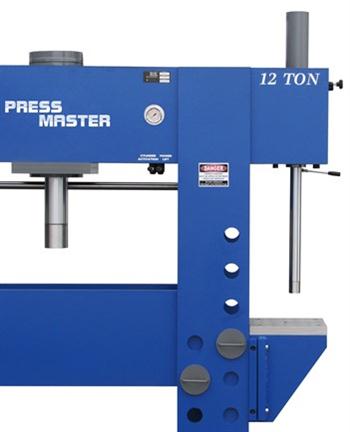Broaching Basics
Broaching is a complex machining technique that is widely used in a huge number of machine shop processes. Broaching basically involves refining a work piece by removing pieces of the metal using a broach. A broach is the cutting piece that will be attached to a hydraulic broach press. When pressure is applied to the broach, it will in turn cut out or remove pieces of the metal it is applied to.
Specific Broaches for Specific Jobs
Each broach is specially designed with a specific purpose in mind. There are many broaching designs available for many different uses. Each broach must be specially designed for its application and often combinations of broaches will be applied for complex pieces. Broaches can be expensive to make if they are highly detailed or technical. Some broaches can cost up to 30,000 dollars to create!
Limitations of broaching:
-
Must be a straight plane—no curves on multiple planes
-
No obstructions over surface length
-
Work piece must be able to withstand the pressure applied during the broaching process
-
Limits on the size of each cut
-
Broaching is suited best to certain materials. Softer materials will produce better results, while achieving smooth and accurate finishes and results on harder materials is possible, it is also more difficult.
Materials that work well for broaching include:
-
Brass, bronze and copper
-
Aluminum, graphite and hard rubbers
-
Wood & wood composites
-
Metals with
-
Plastics
Types of Surface Broaches
There are several basic classifications or types of surface broaches commonly used today. Slab broaches are probably the most simple of broach designs, and also probably the most often used. It is relatively general tool used for cutting flat pieces. A slot broach is designed to cut slots or grooves into a work piece. It works better than milling because numerous broaches can be applied at the same time on the same hydraulic broach press. Contour broaches are made for cutting contoured, convex/concave, cam and odd-shaped pieces. Pot broaches cut the outside part of a cylindrical work piece. There are also internal broaches such as: shell, solid, modular, keyway and concentricity broaches.
Broaching Machines
Just like there are a lot of options on the types of broaches used; there is a wide variety of options when it comes to broaching machines. Choosing a broach press machine will depend on the kind of applications you want to do. Hydraulic broach presses offer consistency and control because of the power and precision they are able to offer. Vertical broach press machines are the most common and also one of the easiest to operate; making it a great choice for machine and repair shops that have a variety of skill levels and workers.
Take a look at our combination H Frame Broach Press. We offer superior quality and superior performance. All made here in North America.

